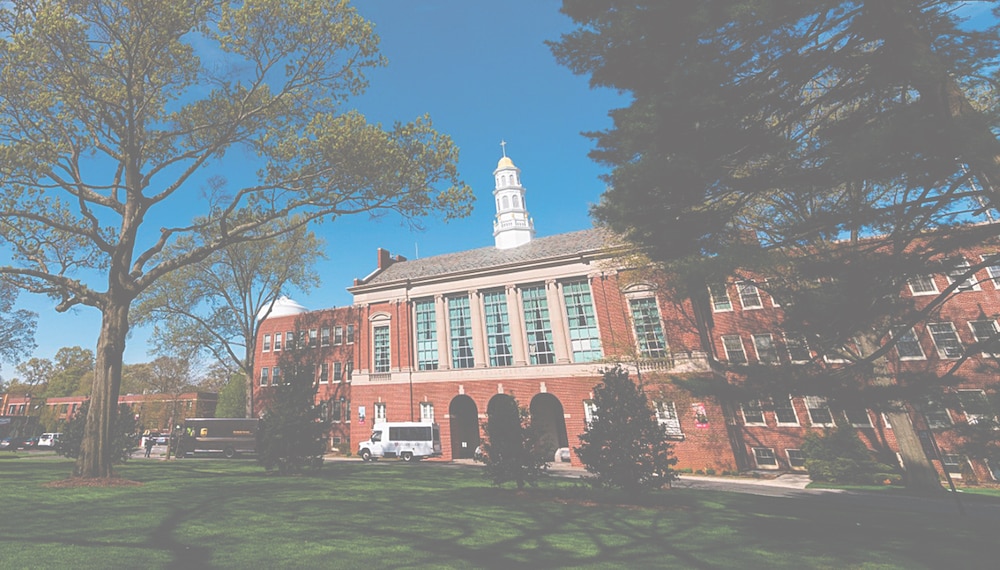
(Photo courtesy of Molloy College)
Less than four months out from the start of the fall semester, Long Island colleges are weighing all options to accommodate their students safely. Back in March, St. Joseph’s College (SJC) and Molloy College complied with New York Governor Andrew Cuomo’s order to practice virtual distance learning through the remainder of the academic year. This remote learning protocol will remain in place through the summer sessions, as administrators await specific guidance from the governor’s office about the higher education aspects of ending NY on Pause.
“Every school is waiting for additional guidance, but we already have information on things we have to do, such as social distancing and wearing a face covering,” Molloy’s Vice President for Student Affairs and Dean of Students Janine Biscari said. “We have a plan to have signage on campus to inform people how to do things safely once they are back on campus.”
In the meantime, Molloy and SJC have taken action to outline the fall semester. Donald Boomgaarden, president of St. Joseph’s College, established a special Fall Task Force several weeks ago. Comprised of faculty, staff and administrators, the Task Force is charged with presenting Boomgaarden with a set of options for moving the college forward with instruction and operations for the 2020-21 academic year. The task force is currently examining three possible contingency plans: a return to on-ground education, continuing with remote education or a hybrid option, which would be a combination of in-person and online classes.
“We need to make a decision by June about what we are going to do in the fall,” Boomgaarden said. “We need time to plan out the fall course schedules. There are a lot of details involved. All schools will have to make a decision by mid-June,
the latest.”
Similarly, Molloy’s COVID Task Force, comprised of senior administration representing multiple departments, is preparing its plan for fall, which will be presented to incoming college president Dr. James Lentini by the end of May. Lentini and the school’s board of trustees are also on track to make an announcement about their fall semester plans in June.
“We are looking to do as much face-to-face learning as is possible and safe,” Biscari said. “The safety of our community is our number one goal. Our other goal is to keep our students on track to graduate on time. We are prepared to go fully remote. The common option for most schools is going to be a combination, a hybrid model of some face-to-face and some online.”
Prior to the crisis, SJC offered 27 fully online courses. The way Boomgaarden views it, SJC as three campuses: its Brooklyn campus, it’s Patchogue campus and its virtual campus. While Boomgaarden said that in-person education can not be replaced entirely, the school is embracing the increased use of technology to educate students.

(Photo courtesy of St. Joseph’s College)
“If it is possible to open on-ground, we certainly will, if not, we will be ready with an alternative,” Boomgaarden said. “The courses that we are offering online will have special aspects to them that will make them more robust than a typical online course.”
Should the colleges be forced to remain remote, one challenge would be adapting curricula that require students to complete lab work. With safety and student experience in mind, the SJC’s Task Force members are surveying input from students, faculty and staff to gather more information about possible future steps.
“We have to get creative with that and it is one of the things that the task force is working on,” Boomgaarden said. “There has been a conversation about opening up some on-ground facilities while maintaining social distancing. For example, studio classes for students of the arts. I am not sure if you can fully replace those experiences online.”
Another aspect of these college’s COVID-19 contingency plans is on-going financial support. Most higher education instituted received aid through the CARES Act. Molloy has set aside emergency funding for students affected by COVID-19, while both Molloy and SJC instituted a school-wide tuition freeze for all current and incoming students. The freeze locks-in tuition at this year’s current rates. Along with the tuition freeze, SJC recently created a COVID-19 Student Emergency Assistance Fund, as well as the general SJC Student Emergency Fund.
“We recognize that this step is a serious one, as costs incurred by the institution to prepare and support these various modes of learning—including the purchase of new technologies, expenditures for staff and faculty training, and additional labor by all—will be quite high, Boomgaarden wrote in a statement on the college’s website. “We must consider the gravity of the crisis for our entire region when making decisions about the future.”
In addition to providing financial assistance, both schools are currently offering virtual assistance through its career and counseling centers. Molloy counselors have even obtained out-of-state licenses to help their out-of-state students cope.
“We encourage students to think about the future and not to let the virus affect their goals for higher education,” Boomgaarden said. “In many ways, the crisis has helped us see what is really important. Living out your dreams and moving forward in life is significant, and students should not give up on their education.”


















